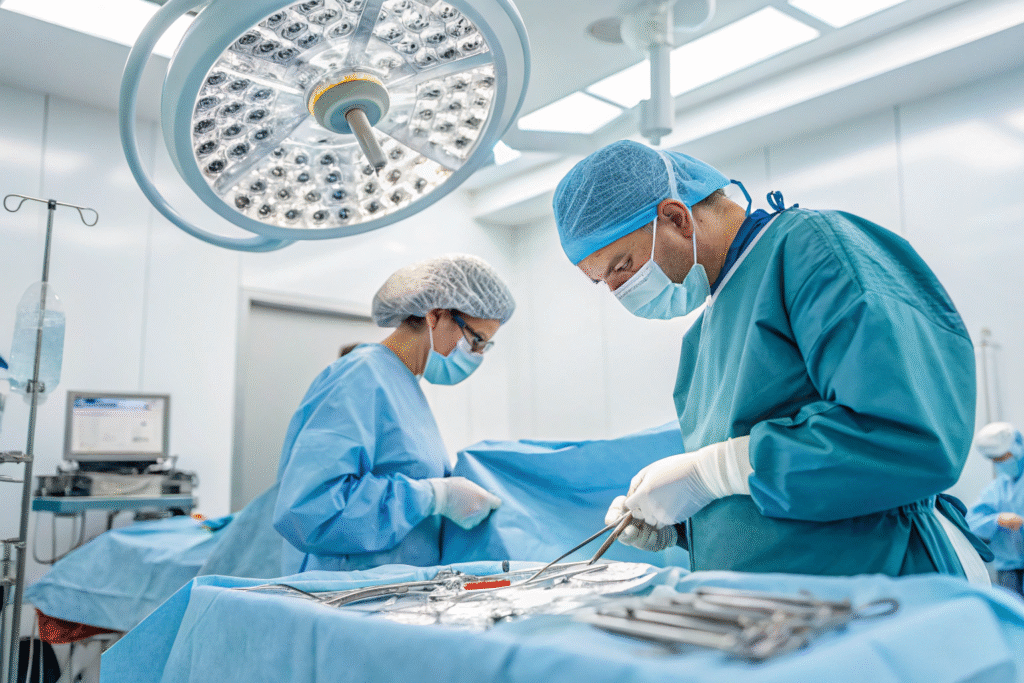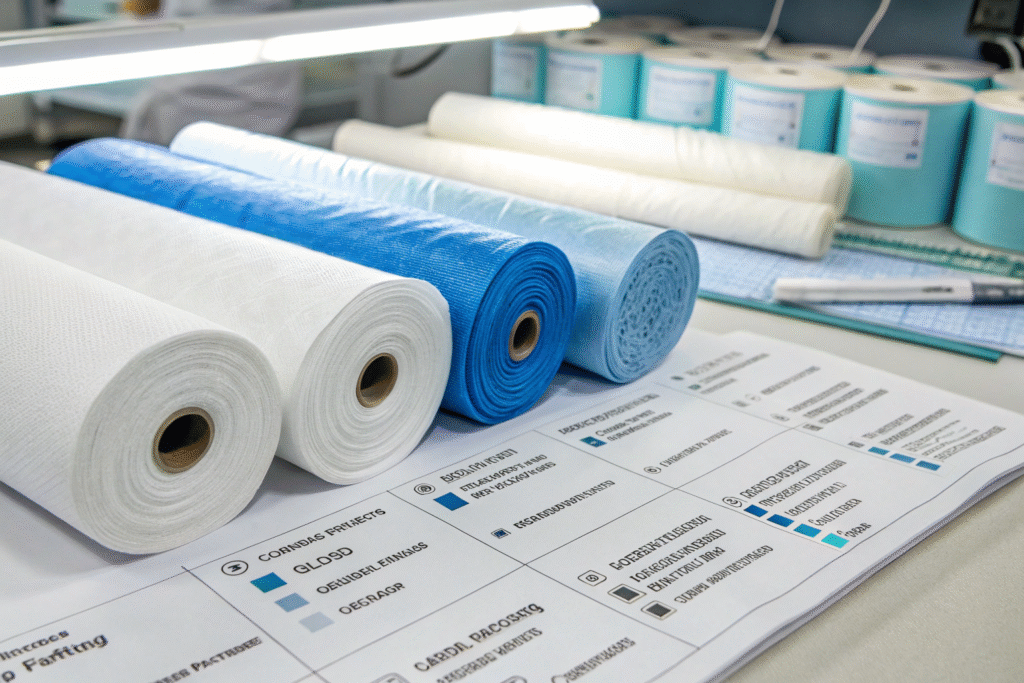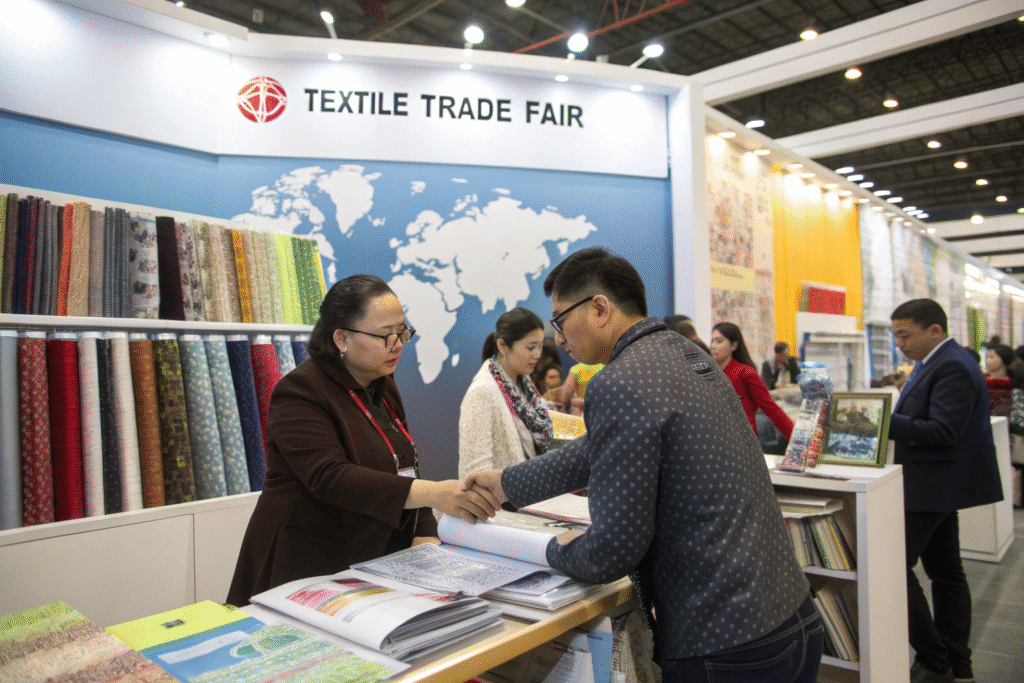When healthcare professionals and procurement teams look for surgical textiles, one of the most important concerns is safety. Infections acquired during surgery can have life-threatening consequences, and one of the defenses against cross-contamination is the barrier effectiveness of surgical fabrics. Buyers often struggle with questions like: Which suppliers meet international safety standards? How can I be sure the fabrics are truly protective? How do I balance cost and certification requirements?
To source ISO 22608 tested surgical textiles, you must focus on suppliers who not only comply with the technical barrier performance standard but also demonstrate transparent testing, consistent supply, and international logistics support. This ensures that the materials meet the required level of resistance against synthetic blood penetration, reducing risks in surgical environments.
For those of us in the textile industry, the challenge is not just producing fabric, but providing trusted assurance through testing, certification, and traceability. Let’s break this down step by step.
Why Is ISO 22608 Important in Medical Textiles?
ISO 22608 is the international standard that evaluates the resistance of textiles to penetration by synthetic blood under pressure, a simulation of what may occur during surgery. Hospitals and clinics increasingly require this certification to ensure protective apparel like gowns, drapes, and masks maintain safety. Without it, procurement risk increases, and liability for infection spread is higher.

What Does ISO 22608 Testing Involve?
The ISO 22608 test simulates synthetic blood contact under controlled pressure. The textile must show no penetration through layers, seams, or coatings. For suppliers, passing this test confirms the product is suitable for high-risk surgical environments. For buyers, this means assurance of blood-borne pathogen protection. Learn more from ISO.org and independent testing labs such as SGS.
Why Hospitals and Buyers Demand It?
Major hospitals in the U.S. and Europe are increasingly strict about infection control. Procurement guidelines often require ISO 22608 alongside AAMI PB70 standards. This makes certification a non-negotiable requirement. As the global supply chain becomes more competitive, buyers are prioritizing suppliers with clear proof of compliance. For reference, you can check the FDA’s medical textile regulations or CDC guidelines on infection control.
Key Qualities to Look for in Certified Surgical Fabrics
When sourcing blood-barrier surgical fabrics, certification alone is not enough. You must also evaluate the material properties that impact usability and comfort in real-world surgical settings.

How Do Durability and Comfort Balance Out?
Surgeons often wear gowns for long hours. A fabric must be breathable yet protective. Laminated non-wovens, spunbond-meltblown-spunbond (SMS), and coated polyester blends are common choices. Some suppliers offer reusable barrier fabrics that withstand multiple wash-sterilize cycles, while others focus on single-use disposables. Buyers can compare options on Medline’s catalog or explore research from ScienceDirect’s medical textile studies.
What About Certification Traceability?
It is not enough to claim compliance. Buyers must ensure each batch is traceable. Reliable suppliers provide QR-code-based data sheets for shrinkage, colorfastness, and safety results. For instance, global labs like Intertek provide independent validation reports. This not only satisfies compliance audits but also builds trust between supplier and buyer.
Where to Find Reliable ISO 22608 Certified Suppliers?
Finding the right supplier requires more than an online search. With rising competition, buyers need to prioritize partners who combine compliance, scale, and proven track records in medical-grade fabrics.

Should You Source From Trade Shows or Directly Online?
Many American buyers attend Medica (Germany) or CMEF (China) for supplier scouting. Trade fairs allow face-to-face trust building. However, platforms like Alibaba Medical Textiles and Global Sources Healthcare have simplified online sourcing. Experienced buyers often blend both: initial research online, final selection at trade shows.
How to Verify a Supplier’s Testing and Logistics?
Request CNAS/ISO lab certificates and test reports before finalizing. Trusted suppliers also provide export support for customs clearance and tariff optimization. For instance, exporters in Keqiao, China, leverage bonded warehouses to shorten lead times to the U.S. You can explore how companies list their compliance on Made-in-China Medical Textiles or review supplier performance metrics from ImportYeti.
What Are the Cost and Compliance Challenges?
Cost remains one of the most difficult challenges in sourcing ISO 22608 textiles. Buyers often find that prices for certified fabrics are 10–20% higher than uncertified alternatives.

Are Certified Fabrics Always More Expensive?
Not always. While certified surgical textiles involve testing fees, advanced manufacturing efficiency can offset costs. Large-scale producers often have better economies of scale. Some even pass cost savings to buyers. Industry reports on Textile World and Fibre2Fashion explain how production optimization helps lower certified textile costs.
How to Manage U.S. Tariff and Import Barriers?
U.S. import tariffs on medical textiles can increase landed cost. Buyers mitigate this through FTA zones, bonded warehouses, or suppliers with U.S. distribution centers. Some exporters align with the RCEP or Belt & Road agreements to optimize shipping. To explore more, see trade resources on the U.S. International Trade Commission and shipping insights from Maersk Logistics.
Conclusion
Sourcing ISO 22608 tested blood-barrier surgical textiles is no longer a niche requirement—it is an essential part of global healthcare supply chains. Buyers must evaluate both compliance and real-world usability, while suppliers must deliver not only fabric but also trust, certification, and logistics efficiency.
At Shanghai Fumao, we support international buyers with end-to-end solutions. From weaving and coating to inspection and packaging, our CNAS-certified lab ensures every meter meets ISO 22608 standards. If you want to co-develop or source your own medical textiles with guaranteed compliance, please reach out to our Business Director Elaine at elaine@fumaoclothing.com.










